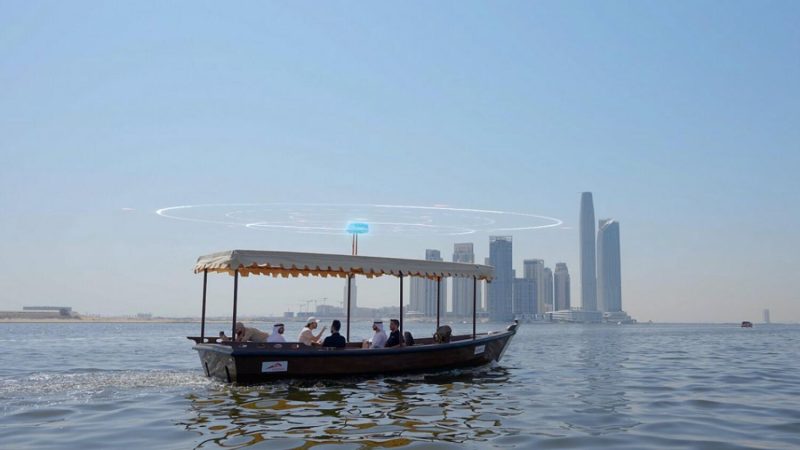
RTA Announces Trial Of Autonomous Electric Boat In Dubai
Dubai has started the trial operation of a driverless electric abra, the Roads and Transport Authority (RTA) announced on Sunday. The traditional boat — a common sight in the Emirate’s waters — can carry eight passengers.
The autonomous vessel was manufactured locally at the RTA’s Al Garhoud Marine Maintenance Centre. Its design retains the heritage identity of abras. The initial journey of the driverless abra took place from Al Jaddaf to the Festival City station on the Dubai Creek. This marks one of the world’s first marine trials in passenger transport.

Mattar Al Tayer, director-general and chairman of the Board of Executive Directors, RTA, said: “The autonomous electric abra boasts superb features highlighted by zero carbon emissions, lower operating and maintenance costs (by up to 30 per cent), and the elimination of noise compared to diesel-powered models.
“It is equipped with two electric motors with a maximum speed of seven knots. It has an autonomous control system and four lithium batteries that ensure an operating time of seven hours. The RTA adopted new technologies in designing the structure … and used fibreglass in the hull to reduce its weight.”
What Is An Abra?
The abra — which comes from the Arabic verb ‘abara’, that means ‘to cross’ — is the city’s most traditional mode of transport. For centuries, it has remained one of Dubai’s most frequented modes of transport, making it the symbol of the city’s history and heritage.

A trip cost starts from Dh1, making it the most affordable option to explore the Emirate’s waters. Marine transport means ferried about 16 million riders in 2022. A master plan for the sector includes the development of four traditional abra stations in Dubai Creek: Bur Dubai, Deira Old Souk, Dubai Old Souk, and Al Sabkha.
The plan envisages increasing the capacity of the abra stations by 33 per cent, “using advanced technologies to reduce maintenance costs and increase the lifespan of assets; improving the lighting of stations and marinas; and providing facilities for customers and investment areas”.
@2022 Hostpot In Dubai. All Right Reserved
